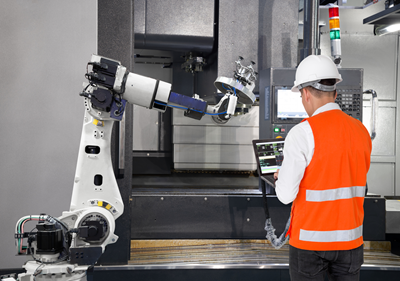Robots have become an integral part of various industries, including manufacturing, healthcare, and logistics. They offer numerous benefits, such as increased efficiency, precision, and reliability. However, like any other machine, robots require regular maintenance to ensure they continue to function optimally. In this article, we will explore the importance of robot maintenance, the types of maintenance tasks, and the benefits of regular maintenance.

Why is Robot Maintenance Important?
Robot maintenance is crucial for several reasons. Firstly, it helps to prevent unexpected breakdowns and downtime, which can lead to significant losses in productivity and revenue. A well-maintained robot can operate continuously without interruption, ensuring that production targets are met. Secondly, regular maintenance helps to extend the lifespan of the robot, reducing the need for costly repairs or replacements. Finally, maintenance ensures that the robot operates safely and efficiently, reducing the risk of accidents and injuries.
Types of Robot Maintenance
There are several types of robot maintenance tasks, including:
- Preventive Maintenance: This type of maintenance involves scheduling regular maintenance tasks to prevent breakdowns and downtime. Examples of preventive maintenance tasks include lubricating joints, cleaning sensors, and updating software.
- Predictive Maintenance: This type of maintenance uses advanced technologies, such as sensors and machine learning algorithms, to predict when maintenance is required. Predictive maintenance helps to reduce downtime and extend the lifespan of the robot.
- Corrective Maintenance: This type of maintenance involves repairing or replacing faulty components. Corrective maintenance is typically performed in response to a breakdown or failure.
- Routine Maintenance: This type of maintenance involves performing regular tasks, such as cleaning and inspecting the robot, to ensure it continues to function optimally.
Benefits of Regular Robot Maintenance
Regular robot maintenance offers numerous benefits, including:
- Increased Uptime: Regular maintenance helps to prevent breakdowns and downtime, ensuring that the robot operates continuously.
- Improved Efficiency: A well-maintained robot can operate more efficiently, reducing the time and resources required to complete tasks.
- Extended Lifespan: Regular maintenance helps to extend the lifespan of the robot, reducing the need for costly repairs or replacements.
- Improved Safety: Maintenance ensures that the robot operates safely, reducing the risk of accidents and injuries.
- Reduced Costs: Regular maintenance helps to reduce costs associated with repairs, replacements, and downtime.
Robot Maintenance Tasks
Some common robot maintenance tasks include:
- Lubricating Joints: Lubricating joints helps to reduce wear and tear on the robot’s mechanical components.
- Cleaning Sensors: Cleaning sensors helps to ensure that the robot can detect and respond to its environment accurately.
- Updating Software: Updating software helps to ensure that the robot operates with the latest features and security patches.
- Inspecting Cables and Connectors: Inspecting cables and connectors helps to prevent damage and ensure that the robot operates reliably.
- Performing Functional Tests: Performing functional tests helps to ensure that the robot is operating correctly and efficiently.
Tools and Equipment for Robot Maintenance
Some common tools and equipment used for robot maintenance include:
- Multimeters: Multimeters are used to measure electrical currents and voltages.
- Oscilloscopes: Oscilloscopes are used to measure and analyze electrical signals.
- Screwdrivers and Pliers: Screwdrivers and pliers are used to perform mechanical repairs and adjustments.
- Cleaning Solutions: Cleaning solutions are used to clean sensors and other components.
- Software Updates: Software updates are used to update the robot’s operating system and software applications.
Best Practices for Robot Maintenance
Some best practices for robot maintenance include:
- Scheduling Regular Maintenance: Scheduling regular maintenance tasks helps to prevent breakdowns and downtime.
- Keeping Records: Keeping records of maintenance tasks helps to track the robot’s history and identify potential issues.
- Training Personnel: Training personnel helps to ensure that maintenance tasks are performed correctly and safely.
- Using Genuine Parts: Using genuine parts helps to ensure that the robot operates reliably and efficiently.
- Following Manufacturer Guidelines: Following manufacturer guidelines helps to ensure that maintenance tasks are performed correctly and safely.
Frequently Asked Questions (FAQs)
- Q: How often should I perform robot maintenance?
A: The frequency of maintenance tasks depends on the type of robot and its usage. It’s recommended to consult the manufacturer’s guidelines for specific maintenance schedules. - Q: What are the most common causes of robot breakdowns?
A: The most common causes of robot breakdowns include worn or damaged components, software issues, and human error. - Q: Can I perform robot maintenance tasks myself?
A: It’s recommended to have trained personnel perform maintenance tasks to ensure they are done correctly and safely. - Q: How can I extend the lifespan of my robot?
A: Regular maintenance, proper storage, and avoiding overloading or misusing the robot can help extend its lifespan. - Q: What are the benefits of predictive maintenance?
A: Predictive maintenance helps to reduce downtime, extend the lifespan of the robot, and reduce costs associated with repairs and replacements.
Conclusion
Robot maintenance is a critical aspect of ensuring optimal performance and longevity of robots. Regular maintenance tasks, such as lubricating joints, cleaning sensors, and updating software, help to prevent breakdowns and downtime, improve efficiency, and extend the lifespan of the robot. By following best practices, using the right tools and equipment, and scheduling regular maintenance tasks, you can ensure that your robot operates reliably and efficiently. Remember to consult the manufacturer’s guidelines and seek professional help when needed to ensure that maintenance tasks are performed correctly and safely. By prioritizing robot maintenance, you can maximize the benefits of robotics and achieve your production goals.
Closure
Thus, we hope this article has provided valuable insights into The Importance of Robot Maintenance: Ensuring Optimal Performance and Longevity. We appreciate your attention to our article. See you in our next article!
